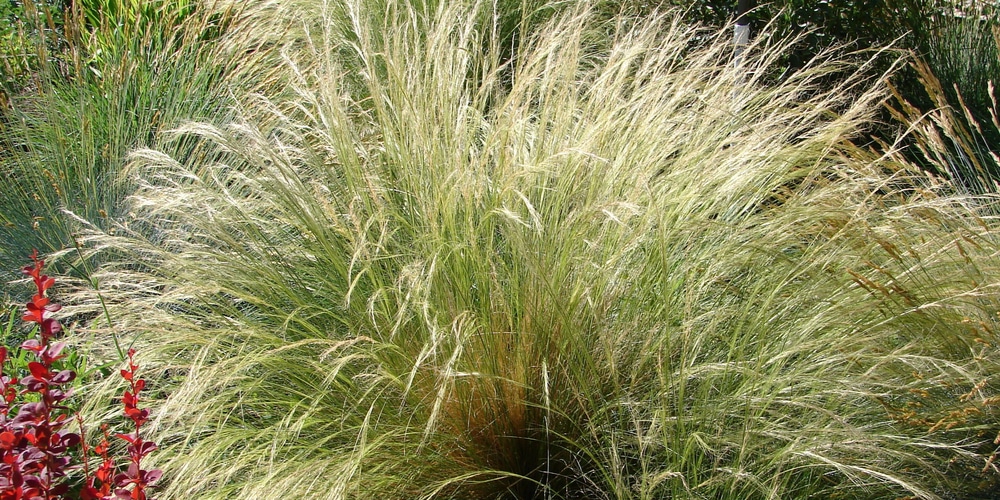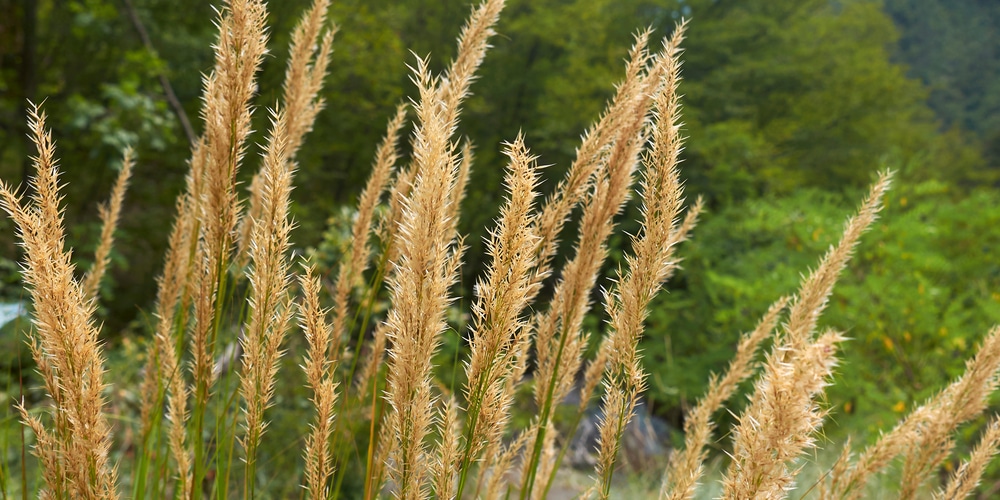The Rough Feathered Grass (Achnatherum Calamagrostis) is a hardy plant that is easy to care for and drought tolerant once it’s settled in.
This grass is perfect for planting in mass to cover grounds or use plots to get that dramatic effect. This grass can also act as a delicate centerpiece, as part of a bouquet, and on dried flower arrangements.

| Botanical Name |
Achnatherum Calamagrostis |
| Common Name | Rough Feather Grass |
| Plant Type | Perennial |
| Flower Color | Magenta colored feathery blades |
| Size When Mature | 36 inches up to 60 inches tall and 18 inches wide |
| Bloom Time | Summer, winter, and fall |
| Sun Requirements | Full Sun |
| USDA Hardiness Zones | 5 – 9 |
| Soil PH Range | 6.5 – 7.5 |
| Soil Type | Moist, but well-drained |
| Water Needs | Medium |
| Native Area | North and Western Europe |
What You Need to Know About Achnatherum Calamagrostis
The Achnatherum Calamagrostis is a beautiful ornamental grass that is native to Europe. This grass grows in tufts of slender, purplish-pink blades that can reach 36 inches up to 60 inches tall and 18 inches wide when it reaches maturity.
This type of grass is spectacular, easy-to-grow grass that will add color and texture to your garden all year round. With its tolerant nature and low maintenance requirements, this grass is perfect for beginners and experienced gardeners alike.
In the summer, it will amuse you with its magenta-colored feathery blades that will bloom and will gradually fade from golden yellow to faded brown during winter with their deciduous foliage.
How to Care for the Achnatherum Calamagrostis
Here’s everything you need to know about growing and caring for a thriving Achnatherum Calamagrostis:
Light
The Achnatherum Calamagrostis will do best in full sun, which means it needs to be in direct sunlight for at least six hours per day. However, If you live in an area with hot summers, it is best to provide some afternoon shade to protect the grass from the intense heat. Its leaves will start to turn brown if it gets too much sun.
If you are thinking of planting it indoors, it is ideal to designate it in a location where it can get direct morning sunlight. It will help the grass to flower, the leaves to grow wider, and the stem to remain sturdy.
Water and Soil Needs
Rough feathered reed grass is drought tolerant once it reaches maturity. However, like all plants, it will appreciate regular watering during the first growing season. After that, you can cut back on watering and allow the soil to dry out between watering.
It also requires a water PH level between 6.5 PH to 7.5 PH which is from mildly acidic to alkaline.
This plant is not picky about soil type, as long as it is well-drained. This grass will tolerate both sandy and clay soils.
Temperature Requirements
As an ornamental grass widely known for its ability to thrive in cold climates, the A. Calamagrostis can also grow in places with warm temperatures. It is native to Europe and brought to North America because of its versatility in adding delicacy to any garden or landscape.
Another reason why it is one of the most popular ornamental grass in the market is that it can thrive in USDA Hardiness Zones 5-9, which are −20 °F to 40 °F.
Fertilizer
This grass does not need fertilizer as a source of supplement to thrive. A light application of a balanced fertilizer that is made of compost or manure in spring is all that is needed.
Common Diseases
This grass is relatively resistant to pests and diseases, which is why it’s a common choice for lawns and golf courses because it requires less maintenance.
The occasional rust or powdery mildew may appear, but it is not harmful to the plant. Deer and rabbits will also leave this grass alone.
Achnatherum Calamagrostis Propagation
This grass is best left alone and let grow to its natural shape and size. If you must prune it, wait until late winter or early spring before new growth begins.
Cut the blades back to about 6 inches from the ground.
It can also be easily propagated from seed, all you need to do is sow the seeds in well-drained soil in early spring and keep them moist until they germinate.
Once they are up and growing, thin the seedlings so that they are about 18 inches apart.
After this, you can sit back and relax while watching nature take care of things.
Related article: When to Transplant Ornamental Grass

